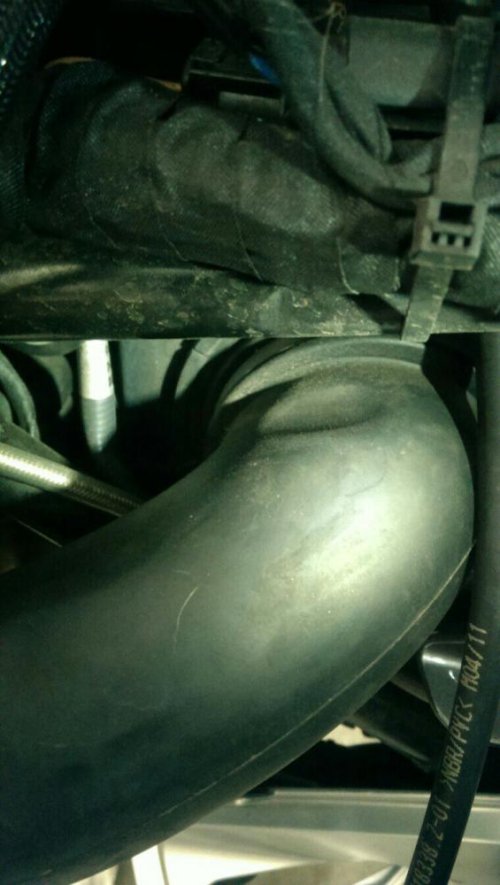Hey folks,
I've read every thread under the sun on this, followed JVB's excellent video, and I think I have a pretty good handle on the mechanisms involved.
However, I can't get a good TBS.
Here's what I do:
* Check free play. All cables seem to have adequate free play.
* Loosen then re-snug right throttle body lock nut.
* Calibrate Harmonizer.
* Hold revs around 3200, adjust adjustment nut until zeroed.
* Tighten down lock nut, fix adjustment to correct.
Here's my issue: if I get a steady ~0 at 3200 with no load, my readings on the road range from low-+ve at crawling speeds, up to +70 if I'm holding a steady 4000rpm in 1st gear.
There's some perceived vibration, particularly in the left grip, at 4k or above, which is encouraging me to shift early. I'm trying to fix that.
(Last year's pre-trip sync was so bad that I stopped in a parking lot after 50 miles, pulled off all the plastic, and basically re-did the sync 'blind' -- I kept my gear on and relied on vibration feel on countless quick runs up and down the lot to get something bearable, mostly ignoring the output of the Harmonizer. I'd like to do better this year!)
Baking in extra -ve during syncing drops the huge +ve offset when on the road, but I'm not feeling good about having an apparently miscalibrated machine in an attempt to correct a different situation. And that -ve offset seems to add some vibration to the footpegs.
I feel like this shouldn't be as trial-and-error based as it seems to be: most other experiences seem to be "if it zeroes on the center stand, it'll be smooth sailing on the road". That's not my experience so far.
The only things that I can observe are mechanically questionable are:
* The top exhaust valve clearance on the throttle-side cylinder is slightly over 0.406mm. All other valve clearances are perfectly in-spec.
* The secondary plugs were both fouled, mostly dry carbon, some oil on the clutch-side cylinder's secondary plug's threads. I chalk this up to short runs as I did diagnostic work prepping for spring.
Can anyone suggest possible causes or things to try? Or is this a case of "take it to the dealer, let them try?" (it's under warranty until November, so if something's wrong it shouldn't cost me, but of course the service itself will).
Thanks in advance, all.
I've read every thread under the sun on this, followed JVB's excellent video, and I think I have a pretty good handle on the mechanisms involved.
However, I can't get a good TBS.
Here's what I do:
* Check free play. All cables seem to have adequate free play.
* Loosen then re-snug right throttle body lock nut.
* Calibrate Harmonizer.
* Hold revs around 3200, adjust adjustment nut until zeroed.
* Tighten down lock nut, fix adjustment to correct.
Here's my issue: if I get a steady ~0 at 3200 with no load, my readings on the road range from low-+ve at crawling speeds, up to +70 if I'm holding a steady 4000rpm in 1st gear.
There's some perceived vibration, particularly in the left grip, at 4k or above, which is encouraging me to shift early. I'm trying to fix that.
(Last year's pre-trip sync was so bad that I stopped in a parking lot after 50 miles, pulled off all the plastic, and basically re-did the sync 'blind' -- I kept my gear on and relied on vibration feel on countless quick runs up and down the lot to get something bearable, mostly ignoring the output of the Harmonizer. I'd like to do better this year!)
Baking in extra -ve during syncing drops the huge +ve offset when on the road, but I'm not feeling good about having an apparently miscalibrated machine in an attempt to correct a different situation. And that -ve offset seems to add some vibration to the footpegs.
I feel like this shouldn't be as trial-and-error based as it seems to be: most other experiences seem to be "if it zeroes on the center stand, it'll be smooth sailing on the road". That's not my experience so far.
The only things that I can observe are mechanically questionable are:
* The top exhaust valve clearance on the throttle-side cylinder is slightly over 0.406mm. All other valve clearances are perfectly in-spec.
* The secondary plugs were both fouled, mostly dry carbon, some oil on the clutch-side cylinder's secondary plug's threads. I chalk this up to short runs as I did diagnostic work prepping for spring.
Can anyone suggest possible causes or things to try? Or is this a case of "take it to the dealer, let them try?" (it's under warranty until November, so if something's wrong it shouldn't cost me, but of course the service itself will).
Thanks in advance, all.
Last edited:

